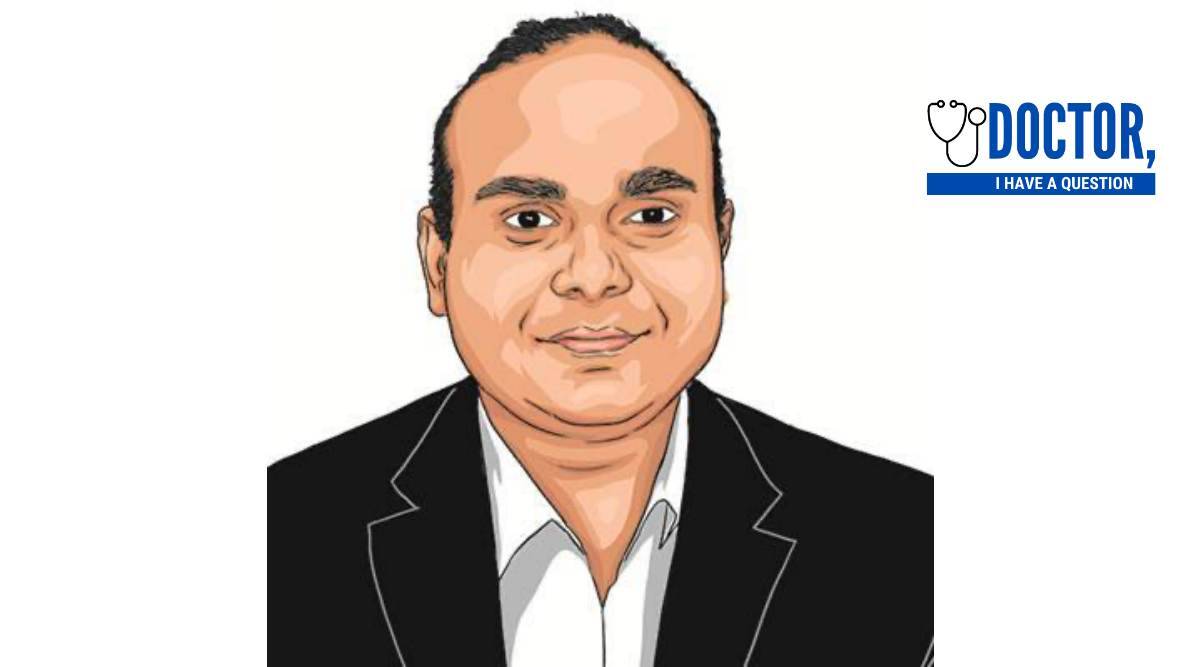
Dr Lancelot Pinto is a proponent of collaborative self-management for chronic respiratory diseases and works toward empowering patients to best manage their illnesses in collaboration with their physicians.
WHY? Dr Lancelot Pinto is a proponent of collaborative self-management for chronic respiratory diseases and works toward empowering patients to best manage their illnesses in collaboration with their physicians. He believes strongly in preventive medicine, and reducing the need for hospitalisations in chronic respiratory illnesses is a focus of his practice of respiratory medicine. He specialises in the treatment of sleep apnea, insomnia, and other sleep-related disorders, with the aim of preventing complications such as high blood pressure and heart disease, that are often a consequence of such disorders. He also specialises in the management of chronic obstructive pulmonary disease (COPD).
Maharashtra has been witnessing a daily upward spiral of Covid-19 cases. On Thursday, the state reported 5,218 cases—the highest one-day count since February. The active cases in the state stood at 25,317 — 27.58 per cent of India's total tally. Although the severity of the infection is mild with 95 per cent of the patients mostly asymptomatic, public health officials are anticipating a further rise in cases, indicative of a "fourth wave."
We are seeing a fresh surge in Covid-19 cases in several urban centres. Is this being fuelled by a new sub-variant of Omicron? What does the data show?
Altogether 99.6 per cent of the samples uploaded from India to the GISAID registry over the past four weeks have been of the Omicron variant, including its sub-lineages. BA.2, referred to as "stealth Omicron" (lacks the deletion at position 69/70 in the S protein) appeared to be replacing the existing strains, and INSACOG reported this to be the dominant strain across the country. The BA.2.38 sub-variant has now been reported from Mumbai and Pune to be the dominant strain based on sampling and is hypothesised to be the strain driving the present surge. Newer sub-lineages and possible variants were always expected, based on our understanding of viral transmission and evolution dynamics, and this comes as no surprise. What is reassuring is that none of these newer sub-variants appears to be more virulent.
Data from Maharashtra shows that BA.2.38 has become the prevailing sub-variant of the Omicron strain in Mumbai. What are the characteristics of this sub-variant?
The sub-variant, similar to other Omicron strains, appears to evade immunity offered by vaccinations and past infections. This is why we are witnessing a significant proportion of breakthrough infections and reinfections. There is data to suggest that the sub-variant may be more transmissible, explaining the present surge. However, vaccination and prior infection do appear to continue to protect against moderate and severe disease, and this is reassuring.
What are the clinical symptoms of the new sub-variants?
Fever, sore throat (often severe), nasal congestion, body ache, loss of taste and a mild cough are the predominant symptoms that are being reported. Diarrhoea is also occasionally reported, but seems less common than the frequency with which it was reported with earlier Omicron strains. For most-individuals, symptoms appear to get better in four days, with fatigue and a mild cough often persisting longer.
We are seeing several cases of reinfection in the present surge. Does this indicate that the immunity offered by previous variants and vaccination is not protection enough?
Immunity can be defined as the body's ability to contain an infection and not allow it to cause major damage. If you use this definition, previous infections and vaccinations do appear to be offering individuals with a robust immunity against Covid-19. However, prior infection and/or vaccination may not always protect an individual from getting infected, as variants such as Omicron are known to be "escape variants" that can evade the first line of defence against infection.
The hospitalisation rates are very low in the present surge. Does this show that the new variants of Covid-19 are becoming more transmissible and less virulent?
This fortunately does appear to be the case. However, we must not ignore the role that vaccination has played, and the "lesser virulence" could be a combination of the virus being milder and the immune response being a lot stronger. In a high-risk, unvaccinated individual with no prior exposure to the virus, even mild strains could potentially cause severe disease and we must, therefore, strive to vaccinate everyone.
People who have been administered boosters are getting reinfected. International data also shows high breakthrough infections. How robust is the protection offered by the current vaccines?
We need to constantly remind ourselves that vaccines are designed to create an immune response that prevents severe disease, and the present vaccines and boosters appear to be doing an excellent job. We should revisit the role of boosters among individuals, who have a normal immune system and do not have comorbidities, as frequent boosters in such individuals may not be necessary. Studies clearly show benefit among individuals who are immunocompromised, and all our future efforts should be targeted to this group.
What is the current hospitalisation trend in Mumbai?
A significant proportion of hospitalisations seems to be of individuals who are admitted with Covid-19, and not because of it. The primary respiratory manifestation of Covid-19 does not seem to be warranting hospitalisation in the majority. However, as with any other viral infection, individuals with underlying comorbidities are manifesting conditions related to worsening of their comorbidities, which result in them being hospitalised. Despite this, the overall number of hospitalised individuals seems to be a fraction of the peak that was witnessed last year.
Courtesy: IE.
|
